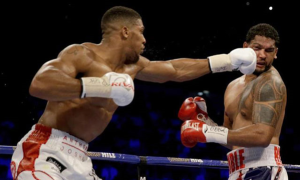For many years, the 4 – 4 – 2 was considered an ideal formation. Two box – to – box central midfielders, 2 wingers on either side who could run up and down the pitch all day long and 2 strikers who knew where the back of the net was.
And then came the 4 – 2 – 3 – 1.
It is actually a very fluid system of play, one that is frequently seen in most matches I see nowadays. Almost all European teams follow this system, or some variant of it. (I can only say this about European football, as I have limited knowledge of football in other continents.)
This stable formation allows the team to attack and defend equally well and allows the players to express themselves. It consists of a flat back – four, but with increased importance on the wing backs to bomb forward on most occasions, thus providing an extra attacking outlet.
The 2 front sweepers allow the team to prevent any rapid counter attacks from the opposition. Actually, both of them don’t always have to be defence – minded. One can be like a Xabi Alonso or an Andrea Pirlo, a deep – lying playmaker with an excellent passing range. This guy can then go on to control the tempo of the game and make the play. For further attacking thrust, any one of the 2 front sweepers can actually go forward and make Frank Lampard-esque late runs into the box.
Among the attacking 3, 2 of them are generally wide players whose job is to provide width so as to spread the play and stretch the opposition. Ideally, they should have a decent dribbling and crossing ability. Their frequency of crossing the ball towards the centre depends on the team’s strategy.
Undoubtedly, in a 4 – 2 – 3 – 1, the most important position is held by the centre of the attacking 3, the team’s No. 10. He is the fulcrum of the team. Any attacking intent generally goes through him and he’s responsible for the creative link – up play between the front 4.
The No. 10 is characterized by superb technical quality and the ability to dictate the game, the ability to take the game by the scruff of it’s neck. The No. 10 has always been associated with the charismatic kind of players, the Rooneys, the Kakas and the Ozils of present day football.
That leaves us with the lone striker upfront. He is probably only as good as the other 3 in the attacking quartet. Knowing exactly where the back of the net is, he feeds off the service provided to him by the 2 wingers and his No. 10.
This formation probably best exemplifies why football is a team game, and why every individual is only as good as the 10 that play alongside him.
Tags: 4-2-3-1, Football, Football Formation, No. 10












